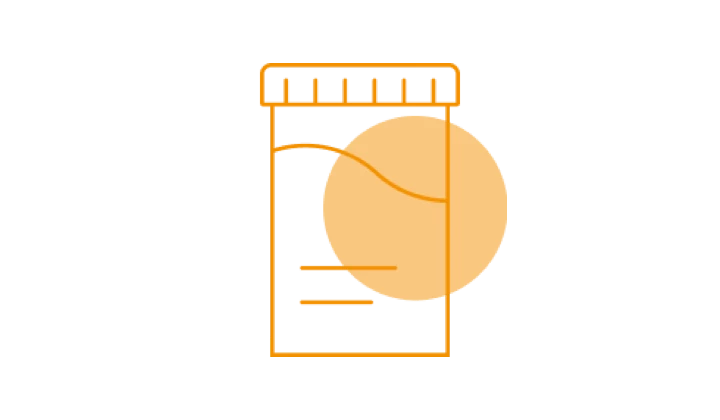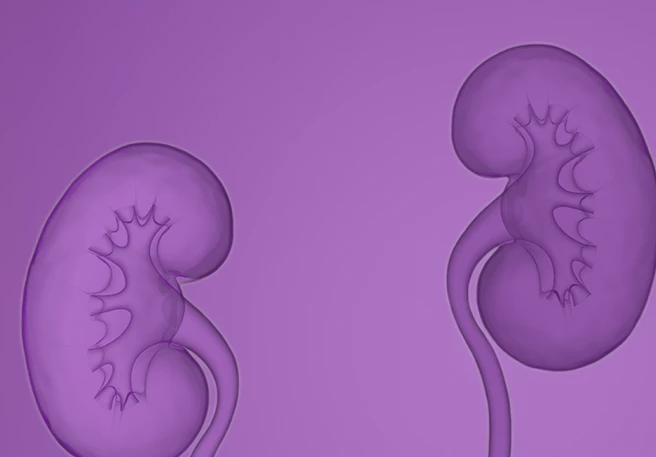
Prediction of end-stage renal disease
For several reasons, it is important to determine the prognosis for the progression of IgA Nepropathy. Particular, those at increased risk of progression require suitable IgA Nephropathy management, while those at low risk should not be subjected to unnecessary medical interventions. Additionally, IgA Nephropathy is a problematic disease from the point of view of clinicians because the risk of continuous deterioration of renal function varies greatly between individuals.1 In the past, treatment decisions were based on risk stratifications that employed clinical risk factors that can be relatively imprecise.1
Why is it important to predict as accurately as possible the risk of progression?
0
of IgAN patients receive unnecessary treatments because they are apparently only at low risk and there is no progression of the disease
0
of IgAN patients refuse treatment despite the fact that they have a high-risk MEST score and renal failure
Barbour SJ et al. International IgA Nephropathy Network. Evaluating a New International Risk-Prediction Tool in IgA Nephropathy. JAMA Intern Med 2019; 179(7): 942–952.
This means that a more precise method of prognosis is required for risk stratification and better decision-making with regard to the need for clinical intervention.
In order to avoid the problem of the provision of excessive or insufficient medical intervention in individual cases, an IgA Nepropathy prognosis calculator has been developed that can be used at time of kidney biopsy to determine the likely risk of progression of IgA Nephropathy.1 Both eGFR and proteinuria are used as surrogate markers for this purpose together with other parameters, such as mean arterial pressure (MAP), body mass index (BMI), age, medication administered to date and the MEST score. The MEST score is based on renal histology findings and consists of four components: mesangial (M) and endocapillary (E) hypercellularity, segmental sclerosis (S) and interstitial fibrosis/tubular atrophy (T). A more recently developed prediction tool also takes into account certain ethnic characteristics.1
Both tools were assessed in a large-scale international cohort study involving more than 3,900 patients in Europe, North America, Japan and China. As a result, the two were found to be reliable aids that would help clinicians improve the management of IgA nephropathy.1 According to the 2021 KDIGO

International IgAN Prediction Tool at biopsy
The risk formulae have been calculated based on the data of a multiethnic international cohort of patients with idiopathic, biopsy-confirmed IgA Nephropathy. These can be used to predict the risk of a 50% decrease in eGFR or development of renal failure following biopsy.1
Please note that the calculator is offered by an external organisation which is under the responsibility of a third party and is in no way affiliated with STADA. By clicking the link below you acknowledge that you will be leaving the IGAN.stada website.
eGFR and proteinuria: the main clinical endpoints for predicting disease progression

eGFR: an important functional endpoint
Estimated glomerular filtration rate (eGFR) is one of the most familiar endpoints that is used as an indicator of deterioration of renal function and can be measured by a simple blood test.3, 4, 5 In cases of IgA Nephropathy, a decrease in eGFR correlates directly with a poorer kidney prognosis.3, 6 For this reason, eGFR is considered the most valuable parameter when it comes to measuring renal function in general.3

Proteinuria: an important surrogate endpoint
In cases of IgAN, there is a close and consistent correlation between the extent and duration of proteinuria and loss of renal function or renal failure.7 Proteinuria values are not constant and vary over time; however, they are useful non-invasive indicators that are obtained inexpensively of the potential progression of IgA Nephropathy.5, 7 They serve as a so-called surrogate endpoint of the extent of renal damage.7 A reduction in proteinuria is thus an informative surrogate marker of improved treatment outcome in patients with IgA nephropathy.
Learn more about IgAN
References
- Barbour SJ et al. International IgA Nephropathy Network. Evaluating a New International Risk-Prediction Tool in IgA Nephropathy. JAMA Intern Med 2019; 179(7): 942–952.
- Kidney Disease: Improving Global Outcomes (KDIGO) Glomerular Diseases Work Group. KDIGO 2021 Clinical Practice Guideline for the Management of Glomerular Diseases. Kidney Int 2021; 100(4S): 1–276.
- Levey AS et al. Change in Albuminuria and GFR as End Points for Clinical Trials in Early Stages of CKD: A Scientific Workshop Sponsored by the National Kidney Foundation in Collaboration With the US Food and Drug Administration and European Medicines Agency. Am J Kidney Dis 2020; 75(1): 84–104.
- Barbour S, Reich H. An update on predicting renal progression in IgA nephropathy. Curr Opin Nephrol Hypertens 2018; 27(3): 214–220.
- Selvaskandan H et al. Monitoring Immune Responses in IgA Nephropathy: Biomarkers to Guide Management. Front Immunol 2020; 11: 572754.
- Goto M et al. A scoring system to predict renal outcome in IgA nephropathy: a nationwide 10-year prospective cohort study. Nephrol Dial Transplant 2009; 24(10): 3068–3074.
- Thompson A et al. Proteinuria Reduction as a Surrogate End Point in Trials of IgA Nephropathy. Clin J Am Soc Nephrol 2019; 14(3): 469–481.





